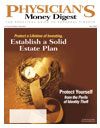Publication
Article
Physician's Money Digest
Do You Risk Your Patients and Portfolio?
Author(s):
In medicine as in finance, there are two personality types: riskseeking and risk-averse. But what if a physician's attitude toward patient care translated into a personal investing style? The answer could be crucial to your investing results.
Journal of General Internal Medicine
The conclusion:
A study found that personal riskseeking physicians admitted 31% of patients with acute chest pain into the hospital for further testing or care. On the other hand, risk-averse physicians admitted 53% of patients with similar symptoms. Risk-seeking physicians take chances with their patients that more conservative physicians would not.
Craving Excitement
I knew a physician, Dr. H, who would rarely admit patients at risk to the emergency room, putting his patients and himself in danger because of his decisions. At the time I thought Dr. H was lazy, but now I view him as a risk-taker. If Dr. H applied his risk-taking view of patient care to managing his portfolio, he would select stocks with a high standard deviation. This measure is applied to the annual rate of return to determine an investment's volatility. His aggressive portfolio style would also mean that he does not diversify, so all of his stocks would more or less be in the same segment of the market. As a result, Dr. H's portfolio would experience dramatic highs and lows. Yet he would welcome this excitement because of his risk-seeking personality.
The Neural Basis of Financial Risk-
Taking
These individuals are prone to risktaking behavior because their pleasure centers (ie, nucleus accumbens) are stimulated when they make perilous financial choices, according to the study by Camelia Mariana Kuhnen and Brian Knutsen (Elsevier Inc; 2005). Activation in the nucleus accumbens is associated with a positive anticipatory affective state, which makes the investor feel good.
Calculating Performance
Does risky financial behavior earn better investment returns? Calculating the risk-adjusted performance of your portfolio with the Sharpe ratio can help you to decide. This measure reveals whether the returns are due to smart decisions or excess risk. To determine the Sharpe ratio, subtract the rate of a risk-free investment (eg, US Treasuries) from the rate of return and divide by the standard deviation of the portfolio. An investment is considered good if the higher return is not associated with too much risk; the higher the Sharpe ratio, the better the risk-adjusted performance.
Let's determine the Sharpe ratio for two physician-investor portfolios: riskseeking and risk-averse. Each portfolio has earned identical returns of 10%, the risk-free rate of return of US Treasuries is 3%, and the standard deviations are 16% and 32% for riskaverse and risk-seeking, respectively. The calculations are as follows:
The risk-seeking physician-investor makes the same return as the risk-averse physician. Yet because of their choice of stocks with a higher standard deviation, the risk-adjusted return is half as much as a risk-averse portfolio. In order to increase the Sharpe ratio, the risk-seeking investor would either have to halve the risk or double their return.
Another way for physician-investors to determine investment risk is through the Web site RiskGrades (www.risk grades.com). This free service helps investors to determine their portfolio's overall risk and the effectiveness of its diversification by comparing investment risk across all asset classes, currencies, and regions. Updated on a daily basis to reflect changing risk levels, RiskGrades compares the current estimate of an asset's return volatility to the market-cap weighted average return volatility of a diverse set of international equity markets during normal market conditions.
Shirley M. Mueller, MD, dissects barriers to
effective monetary decisions so they
become manageable. Her unique training
and experience as a practicing physician
board certified in neurology and psychiatry,
combined with her 7-year investment advisor career, contribute
to her expertise. She welcomes questions and comments
at MyMoneyMD@aol.com.
